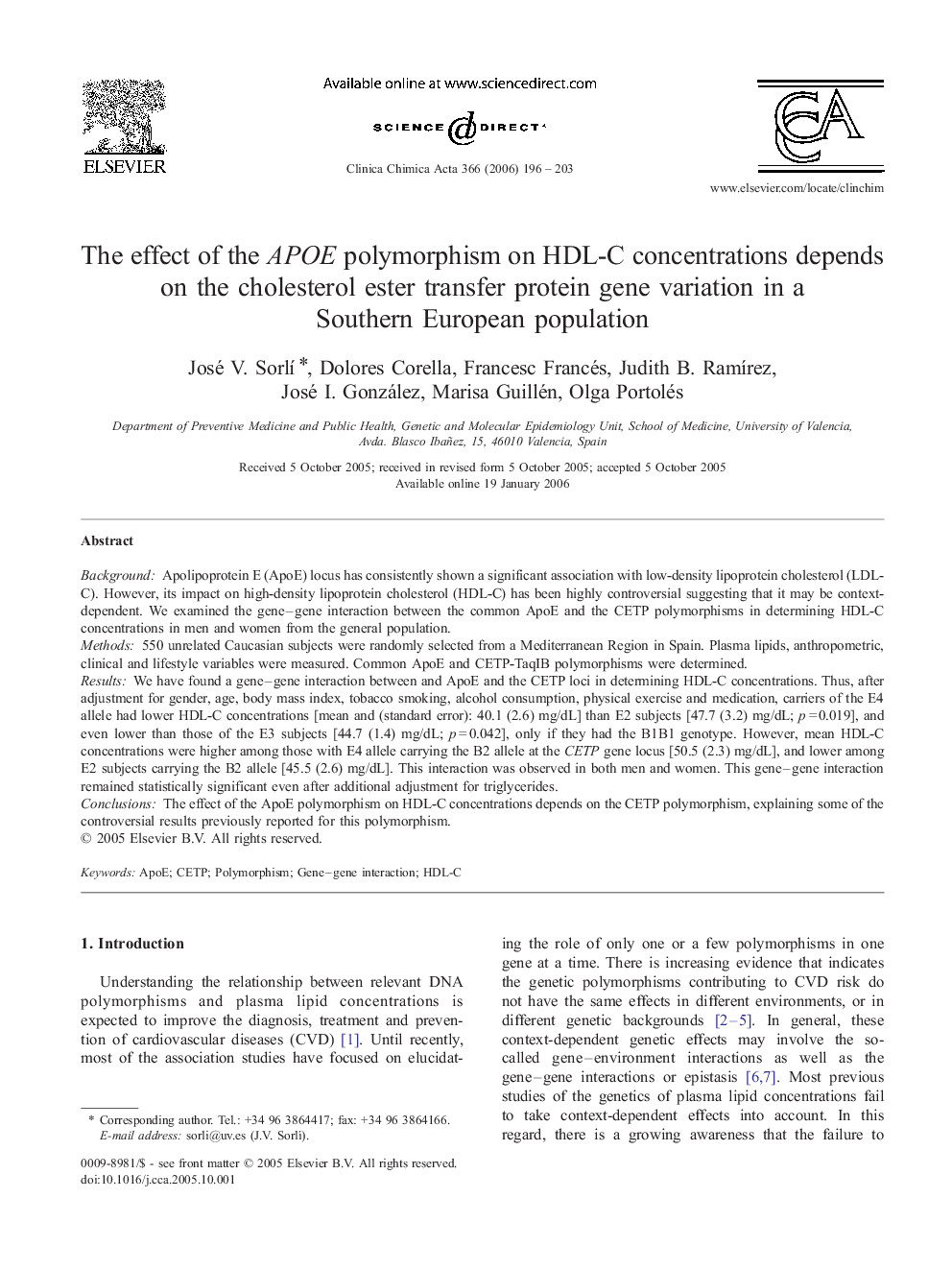| Article ID | Journal | Published Year | Pages | File Type |
|---|---|---|---|---|
| 1968172 | Clinica Chimica Acta | 2006 | 8 Pages |
BackgroundApolipoprotein E (ApoE) locus has consistently shown a significant association with low-density lipoprotein cholesterol (LDL-C). However, its impact on high-density lipoprotein cholesterol (HDL-C) has been highly controversial suggesting that it may be context-dependent. We examined the gene–gene interaction between the common ApoE and the CETP polymorphisms in determining HDL-C concentrations in men and women from the general population.Methods550 unrelated Caucasian subjects were randomly selected from a Mediterranean Region in Spain. Plasma lipids, anthropometric, clinical and lifestyle variables were measured. Common ApoE and CETP-TaqIB polymorphisms were determined.ResultsWe have found a gene–gene interaction between and ApoE and the CETP loci in determining HDL-C concentrations. Thus, after adjustment for gender, age, body mass index, tobacco smoking, alcohol consumption, physical exercise and medication, carriers of the E4 allele had lower HDL-C concentrations [mean and (standard error): 40.1 (2.6) mg/dL] than E2 subjects [47.7 (3.2) mg/dL; p = 0.019], and even lower than those of the E3 subjects [44.7 (1.4) mg/dL; p = 0.042], only if they had the B1B1 genotype. However, mean HDL-C concentrations were higher among those with E4 allele carrying the B2 allele at the CETP gene locus [50.5 (2.3) mg/dL], and lower among E2 subjects carrying the B2 allele [45.5 (2.6) mg/dL]. This interaction was observed in both men and women. This gene–gene interaction remained statistically significant even after additional adjustment for triglycerides.ConclusionsThe effect of the ApoE polymorphism on HDL-C concentrations depends on the CETP polymorphism, explaining some of the controversial results previously reported for this polymorphism.
